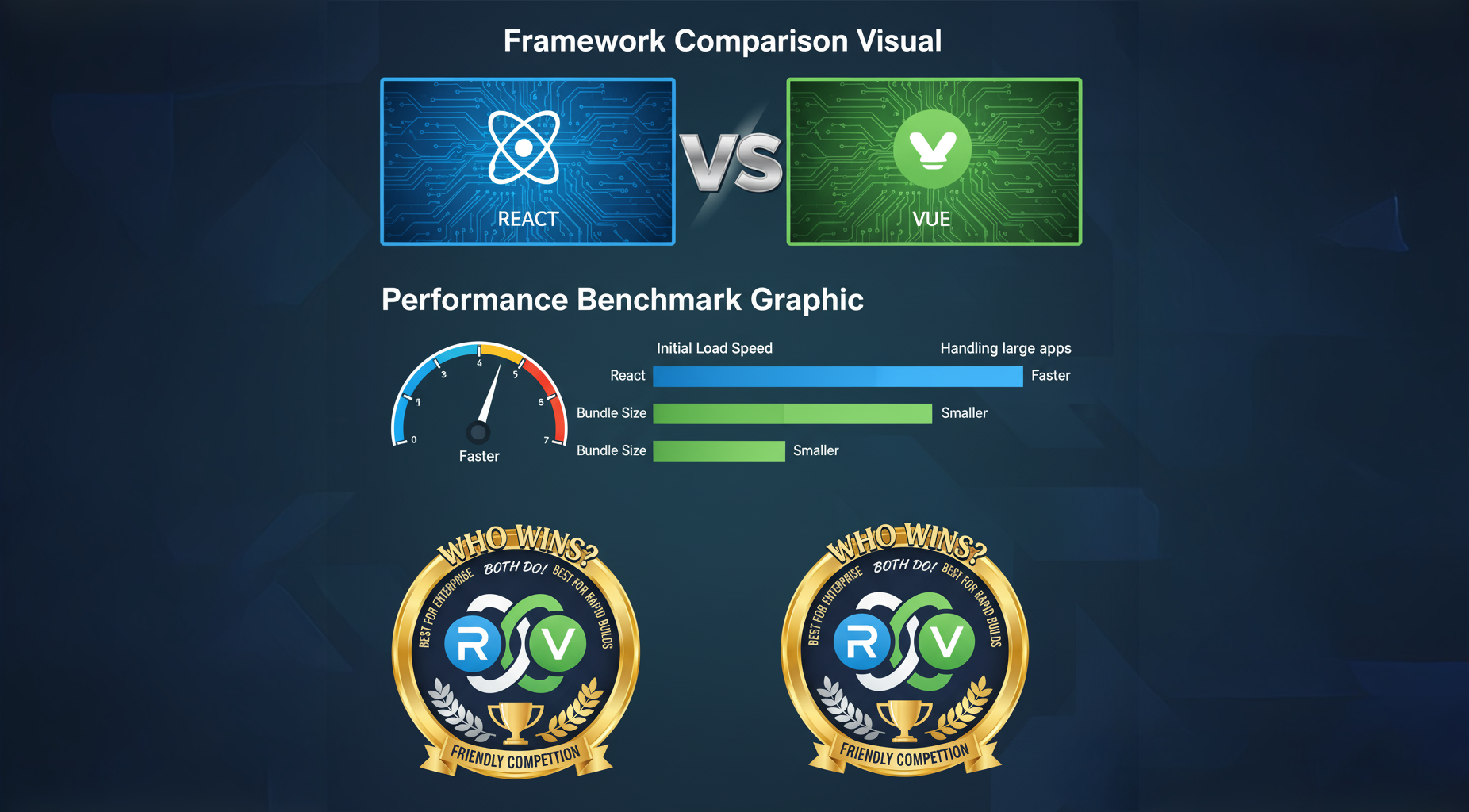Part 2: React vs Vue in 2025 – Performance, Ecosystem, and Practical Use

Quick Recap
Previously, we explored how React and Vue differ in philosophy and the day-to-day developer experience they offer. Now, let’s see how these frameworks stack up in live projects—focusing on their performance, ecosystem, and the types of teams that benefit most from each.
Real-World Performance
React and Vue are both built around virtual DOM technology, which keeps web apps fast and interactive. For large-scale projects with complex user interfaces, React’s rendering logic and concurrency features help manage heavy loads gracefully. Vue, on the other hand, offers a highly efficient reactivity system, yielding excellent startup speeds and lean bundle sizes—an edge for lighter sites or content-first experiences.
Exploring the Ecosystem
React brings an expansive ecosystem to the table. Developers can tap into time-tested libraries for routing (React Router), advanced state logic (Redux, Zustand), and frameworks (Next.js) that offer features like server-side rendering and static site output. For teams building mobile apps, React Native enables cross-platform coding to reach iOS and Android with shared UI logic (a major plus for unified teams).
Vue’s ecosystem is slightly smaller, but what it delivers is cohesive and developer-friendly. Vue’s official solutions for routing and state management (Vue Router and Pinia or Vuex) are baked-in and work seamlessly. Nuxt.js empowers developers with easy server-side rendering options, and tools like Vite keep development lightning-fast. Vue is especially valued in the startup world for these reasons—minimal friction, quick learning, and reliable tooling right from the get-go.
Where They Shine (Use Cases Breakdown)
| Scenario | React | Vue |
| Large, complex platforms | Tailored for apps that scale globally | Usable, but not always the first pick |
| Fast prototypes/MVPs | Code-heavy setup can slow MVP launches | Streamlined setup—great for quick pivots |
| Cross-platform (mobile) | React Native lets you hit web and mobile together | Vue Native exists, but less mainstream |
| Performance-centric | Excels under intensive, multi-user workloads | Swift first loads and smooth transitions |
Pros and Cons in Everyday Dev Life
| Framework | What People Love | What Holds It Back |
| React | Flexibility, thriving ecosystem, top support | Can be overwhelming for beginners |
| Vue | Quick learning, built-in features, speed | Fewer big companies use it globally |
Industry Perspectives
In 2025, you’ll see React adopted by many of the world’s largest organizations—driven by a massive global community, steady updates, and top job market demand. Vue sees surging favor especially in agile teams, creative startups, and areas valuing rapid turnarounds and happy developers. Both tools are evolving, pushing their own frontiers—React with server components and concurrent rendering, Vue with enhanced reactivity and developer experience.
Who Wins: React or Vue in 2025?
Looking at the whole picture, React continues to dominate for large, sophisticated web applications and businesses that need ultimate flexibility and reliable community support. Its robust ecosystem and cross-platform appeal make it the top framework for organizations planning to scale or tackle complex requirements.
Vue stands out in environments where getting a project live quickly, with minimal headaches, is key. Its approachable nature and smooth learning curve make it a developer favorite for startups, prototypes, and projects that prize simplicity and speed.
Final tip:
- For ambitious builds, enterprise-grade apps, or multi-platform goals, React is the safest long-term investment.
- For friendly onboarding, rapid delivery, and small/medium web projects, Vue delivers unbeatable efficiency and joy.
Ultimately, both frameworks are excellent for 2025—pick the one that empowers your team and project goals the most.

